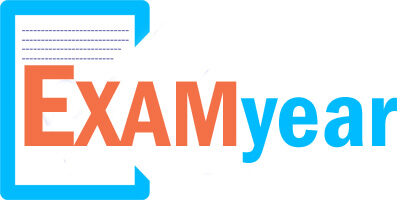Emergency Medicine MCQ Question
Emergency Medicine MCQ Question Papers Free Pdf is available. We have given Pediatric Emergency Medicine MCQs Question Papers in a PDF format. So that the applicants can get the Clinical Emergency Medicine MCQ Question Papers for practice purpose. We have also provided solutions for the Pediatric Emergency Medicine MCQ Question Papers. Therefore, Applicants can check the answers with actual solutions while practicing Emergency Medicine MCQs Question Papers. Here we are providing MCQ Question Papers for Emergency Medicine Exam.

MCQ Question on Emergency Medicine
1. Which of the following is required for the diagnosis of chronic obstructive airway disease?
(1) FEV1:FVC < 0.8 after bronchodilator therapy
(2) FEV1:FVC < 0.8 before bronchodilator therapy
(3) FEV1:FVC < 0.7 before bronchodilator therapy
(4) FEV1:FVC < 0.7 after bronchodilator therapy
2. A 52-year-old woman is brought to the ED after an RTA. After primary survey ahead to pelvis trauma CT is arranged. This shows a left acetabular fracture. On secondary survey you note sensory loss of the left lateral leg and foot. Which nerve has been injured?
(1) Saphenous nerve
(2) Sciatic nerve
(3) Lateral cutaneous nerve of the thigh
(4) Femoral nerve
3. Typical manifestation of exertional heat stroke –
(1) Diaphoresis common
(2) Coagulopathy mild
(3) Normokalemia
(4) Normonatremia
4. ISTH criteria for overt DIC include all, EXCEPT –
(1) Platelet
(2) APTT
(3) Fibrinogen
(4) D-Dimer
5. Which of the following condition in a previously diagnosed case of fibrocystic breast disease, should prompt to look for alternate diagnosis?
(1) Breast tenderness
(2) Breast nodularity
(3) Increase in the size
(4) Skin thickening
6. Flumazenil is an antidote of benzodiazepines, but its use in limited in patients who are chronically exposed to benzodiazepines due to fear of –
(1) Respiratory depression
(2) Dysrhythmias
(3) Seizures
(4) Refractory shock
7. In the case of 65-years-old person with fracture neck of femur the treatment of choice is –
(1) Close reduction
(2) Close reduction with internal fixation
(3) Open reduction
(4) Replacement of head and neck of the femur with a prosthesis
8. All of the following can be the presentation of pulmonary hypertension in early stages, EXCEPT –
(1) Syncope
(2) Dyspnea
(3) Chest pain
(4) Peripheral Edema
9. During mechanical ventilation of an intubated hypoxic patient, if the plateau pressure is persistently above 30 cm H20, then what needs to be done?
(1) Decrease sedation
(2) Increase tidal volume by 1 ml/kg
(3) Decrease tidal volume by 1 ml/kg
(4) Increase PEEP
10. Which among the following is not a cyanotic heart disease?
(1) Transposition of greater arteries
(2) Atrial septal defect
(3) Pulmonary atresia
(4) Tetralogy of fallot
11. As a rule of thumb, the appropriate depth of ET tube placement in a 3 kg infant as measured from the lips is –
(1) 5cm
(2) 7cm
(3) 9cm
(4) 8cm
12. According to Rutherford criteria for acute limb ischemia, which of the following category require urgent revascularisation?
(1) Category II b
(2) Category II
(3) Category I
(4) Category II a
13. False statement regarding testicular torsion is –
(1) Manual detorsion is done by open book manner.
(2) Pain is usually of sudden onset.
(3) Cremasteric reflex is present.
(4) Occurs in neonates due to undescended testes.
14. Regarding intra — ventricular haemorrhage (IVH) of prematurity, the following are true, EXCEPT –
(1) It usually develops spontaneously
(2) MRI is the preferred imaging technique for screening
(3) Prophylactic administration of indomethacin reduces incidence of severe IVH
(4) Majority of patients with IVH have no clinical symptoms
15. Why was a ‘black box’ Food and Drug Administration (FDA) warning issued for haloperidol and droperidol?
(1) Excessive sedation
(2) Extrapyramidal syndrome
(3) Hepatic toxicity
(4) Prolongation of the Q-T interval and ventricular arrhythmia
16. Which of the following is true about median nerve block?
(1) Median nerve passes between the flexor carpi radialis & palmaris longus tendon.
(2) It provides anaesthesia to whole of the thumb.
(3) With hand in a supine position, flexor carpi radiallis is medial & palmaris longus is lateral
(4) Needle usually should not touch deep fascia.
17. Nephritic syndrome associated with all, EXCEPT –
(1) Minimal change disease
(2) Diabetic nephropathy
(3) Membranous glomerulonephritis
(4) IgA Nephropathy
18. Common side effects of lithium are all, EXCEPT –
(1) Hypothyroidism
(2) Neutrophilia
(3) Alopecia
(4) Blood level increased by thiazides
19. A standard nomenclature for pacing mode programming utilize all, EXCEPT –
(1) V—Ventricular
(2) D-Dual
(3) O — One chamber
(4) A-Atrium
20. Which test is performed for confirming dual blood supply to the hand?
(1) Barbeau test
(2) Snellen test
(3) 6 min. walking test
(4) Single breath count test
| MCQs | Quiz |
| Objective Papers | Question and Answer |
21. What should be the adequate rate and depth of chest compression while performing CPR?
(1) 80-100 compressions/ min with 4-5 cm depth
(2) 120-140 compressions/ min with 6 — 7 cm depth
(3) 100-120 compressions/ min with 5 — 6 cm depth
(4) 100-120 compressions/ min with 4 —5 cm depth
22. Radiographic features of scurvy are similar to that of –
(1) Copper deficiency
(2) Magnesium deficiency
(3) Vitamin A excess
(4) Vitamin D excess
23. Rovsing’s sign is described as –
(1) Palpating in the left lower quadrant causes pain in the right lower quadrant
(2) Internal rotation of the hip causes pain
(3) Extending the right hip causes pain along posterolateral back and hip
(4) Pain at right upper quadrant after palpation
24. Most common cause of pathological fracture in a child is –
(1) Malignancy
(2) Bone Cyst
(3) Fibrous dysplasia
(4) Paget’s disease
25. An infant presents with bilateral swelling over the jaws. No difficulty in breathing but on examination he has rashes over the body and bilateral tender testis. What can be the most likely diagnosis?
(1) Herpes simplex virus infection
(2) Infectious mononucleosis
(3) Mumps
(4) Bacterial lymphadenitis
26. BURP maneuver during endotracheal intubation is used for –
(1) Preventing aspiration
(2) Better glottic exposure
(3) Stabilizing cervical spine
(4) Prediction of difficult airway
27. A 44-years male patient presented with complaint of recurrent history of asthma allergic rhinitis and palpable purpura chest x-ray is suggestive of fleeting pulmonary infiltrates. What is probable diagnosis?
(1) Adult onset asthma
(2) Churg-Strauss syndrome
(3) GPA
(4) Microscopic polyangittis
28. Which is the preferred opioid for pain management in patients having renal failure?
(1) Fentanyl
(2) Morphine
(3) Meperidine
(4) Codeine
29. A young male presents to emergency department with complain of pain in right wrist. He gives history of sudden dorsiflexion of wrist while working, imaging is suggestive of scaphoid fracture. Which of the following splinting technique is useful?
(1) Cock up splint
(2) Long arm gutter splint
(3) Thumb spica splint
(4) Figure of 8 bandage
30. All are correct about blast injuries, EXCEPT –
(1) The intensity of an explosion pressure wave declines with the cubed root of the distance from the explosion.
(2) The effects of an explosion in a closed space, such as a room, bus or train are much greater than in an open space.
(3) A person standing next to a wall may suffer less primary blast injury.
(4) Black powder is an example of a low order explosive.
31. Which of the following does not indicate an ectopic pregnancy?
(1) History of prior tubal surgery for sterilization
(2) Prior Pharmacological induction of abortion
(3) Serum B HCG doubling time of 1-2 days
(4) Maternal age 35-44 years
32. Causes of high anion gap metabolic acidosis are all, EXCEPT –
(1) Acid loads (Ammonium chloride)
(2) Diabetic ketoacidosis
(3) Alcoholic ketoacidosis
(4) Lactic acidosis
33. Disorder associated with neuropathic joint pain all, EXCEPT –
(1) Tabes dorsalis
(2) Syringomyelia
(3) Leprosy
(4) Haemophilia
34. Following is the characteristics feature of pre-renal azotemia, EXCEPT –
(1) Osmolality more than 500 mOsm/kg
(2) FeNa less than %
(3) Hyaline casts in urinary segment
(4) FeNa more than 1%
35. Para pneumonic effusion factor indicating the likely need for procedure more invasive are all, EXCEPT –
(1) Loculated pleural fluid
(2) Pleural fluid pH < 7.30
(3) Pleural fluid glucose < 60 mg/dL
(4) Positive gram stain or culture of the pleural fluid
36. A 28-year-old man is brought to the ED in an ambulance after being stabbed in right side of chest with a screwdriver. The accompanying paramedic tells you his on-scene observations: Heart rate: 132 beats per minute, Blood pressure: 90/50 mmHg, Respiratory rate: 30 breaths per minute. He found decreased air entry in the right side of the chest and performed a needle thoracocentesis on the right side. He tells you a hiss of air was heard. On arrival in the ED patient vitals are: Heart rate: 112 beats per minute, Blood pressure: 105/87 mmHg, Respiratory rate: 25 breaths per minute. What is the next step in this patient’s management?
(1) Insert chest drain
(2) Obtain definitive airway
(3) emergency thoracotomy
(4) eFAST scan
37. What is the most common abnormal ECG finding in patients with a PE?
(1) Normal ECG
(2) Right bundle branch block
(3) S1 Q3 T3 (McGinn-White sign)
(4) Sinus tachycardia
38. “Gasping syndrome” in infants occurred due to –
(1) Isopropanol
(2) Benzyl alcohol
(3) Ethylene glycol
(4) Diethylene glycol
39. Parathyroid hormone level is reduced in –
(1) Vitamin D dependent rickets
(2) X-linked hypophosphatemia rickets
(3) Hypophosphatasia
(4) Vitamin D defictency
40. Myositis ossificans is commonly seen at –
(1) Hip
(2) Knee
(3) Elbow
(4) Shoulder
41. Specific treatment for mushroom and plant poisoning –
(1) Physostigmin for delirium, hallucination
(2) Hypertonic Sodium Bicarbonates for ventricular tachydysrhythmias
(3) Esmolol for severe hypertension
(4) Nitroprusside for severe vasospasm
42. Primary putrid lung abscess refers to all, EXCEPT –
(1) Foul smelling breath
(2) Empyema
(3) Anaerobic lung abscess
(4) Pseudomonas aeruginosa infection
43. Most common manifestation of sickle cell anaemia in children is –
(1) Pain abdomen
(2) Acute chest crisis
(3) Sepsis
(4) Severe extremity pain
44. Which end organ toxicity is not a part of severe salicylate toxicity?
(1) Tachypnea
(2) Seizures
(3) Cardiac arrhythmias
(4) Renal failure
45. True statement about anaphylactic shock management is –
(1) Gastric lavage is recommended for food borne allergen
(2) Securing airway in severe anaphylaxis is the first priority
(3) Subcutaneous epinephrine is preferred over intra muscular
(4) In presence of cardiovascular collapse, intramuscular route is preferred



